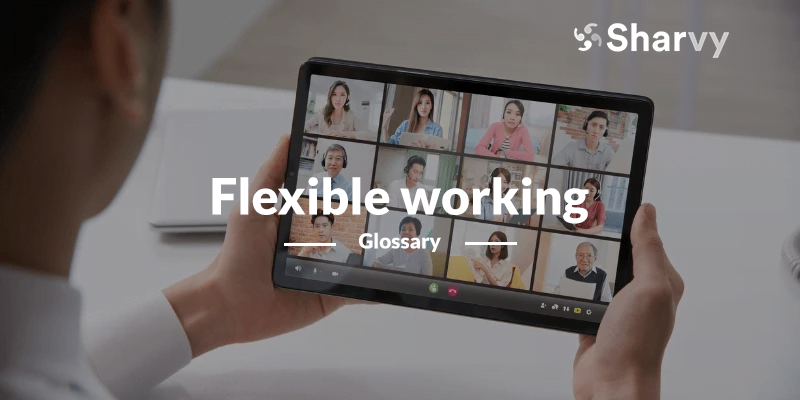What is flexible working? – Definition
Flexible working is the opposite of the traditional 9 to 6 working day. It is rooted in the freedom to choose when, how, and where to work. It allows employees to organize their working arrangements in a personalized way.
Depending on the parameters defined by the employer, employees can telework on certain days, adjust their working hours to suit their personal and family needs, and thus no longer be constrained by the famous 9 am. to 6 pm. working hours.
In other words, there are 4 main aspects to flexible working in companies :
- Flexibility of working hours : in this case, companies stop controlling working hours, clocking in and out, and then lift the fixed time slots.
- Geographical flexibility : in other words, the “work from anywhere” principle. Companies allow their employees to work from home (telecommuting), from the office, from a third location, and abroad.
- Flexibility in the office : also known as the “flex office“. In this case, the company no longer allocates a specific workstation to an employee. Once on-site, they choose their anchor point for the day and begin their tasks.
- Flexibility in work organization : a much more diffuse concept in which companies can encourage job sharing, intrapreneurship, etc.
The benefits of flexible working in the workplace!
There’s no doubt that the world of work is constantly changing. Today, in a context of uncertainty and constant change, companies have no choice but to be agile and adapt (quickly) to their environment.
By embracing flexible working, companies can look to the future and become much more agile than they think. In a crisis, for example, they no longer have to worry about the operational continuity of their business. They can concentrate solely on maintaining their efficiency. In short, flexible working acts like a safety net!
At the same time, the list of benefits of flexible working is long :
- Less staff turnover & improved employee commitment.
- Less stress & less absenteeism.
- More productive and creative employees.
- An agile company organization with gains in productivity and competitiveness.
- Flexible working is also a powerful argument for attracting the best talent.
Of course, this list is not exhaustive! If we get it right, it could be revolutionary for companies regarding competitiveness, innovation, and agility!
3 examples of companies innovating with flexible working!
In recent years, many companies have been experimenting with flexible working.
- The international NGO WWF (WorldWide Fund) is committed to preserving biodiversity. The NGO has decided to innovate and introduce a “Panda Friday” at its Washington, DC office. This day off is to reduce the environmental costs associated with electricity and transport. At the same time, the initiative benefits employees, who gain a paid day out! To compensate, most work overtime on the other days to make up the shortfall.
- Dell Technologies, for example, because of the increase in the number of teleworking days, advocates optimizing space by matching the human presence with the surface area used. As a result, all teams operate under the “flex office” principle and have flexible working hours. This means that employees are no longer allocated a specific workstation. Once on-site, they choose their anchor point for the day and begin their tasks. In correlation, the company has reduced the number of workstations to 1 for every 5 employees.
- At Dropbox, employees organize their days as they wish, and the company has also introduced unlimited paid holidays. The result: employees have never been so engaged and motivated. At the same time, they have decided to implement a policy of “No meeting Wednesdays”. In other words, there should be no meetings on Wednesdays to not interrupt employees on that day (and ultimately, to increase productivity).
You may be wondering how you can take part in this revolution? Read our blog post on the subject !

